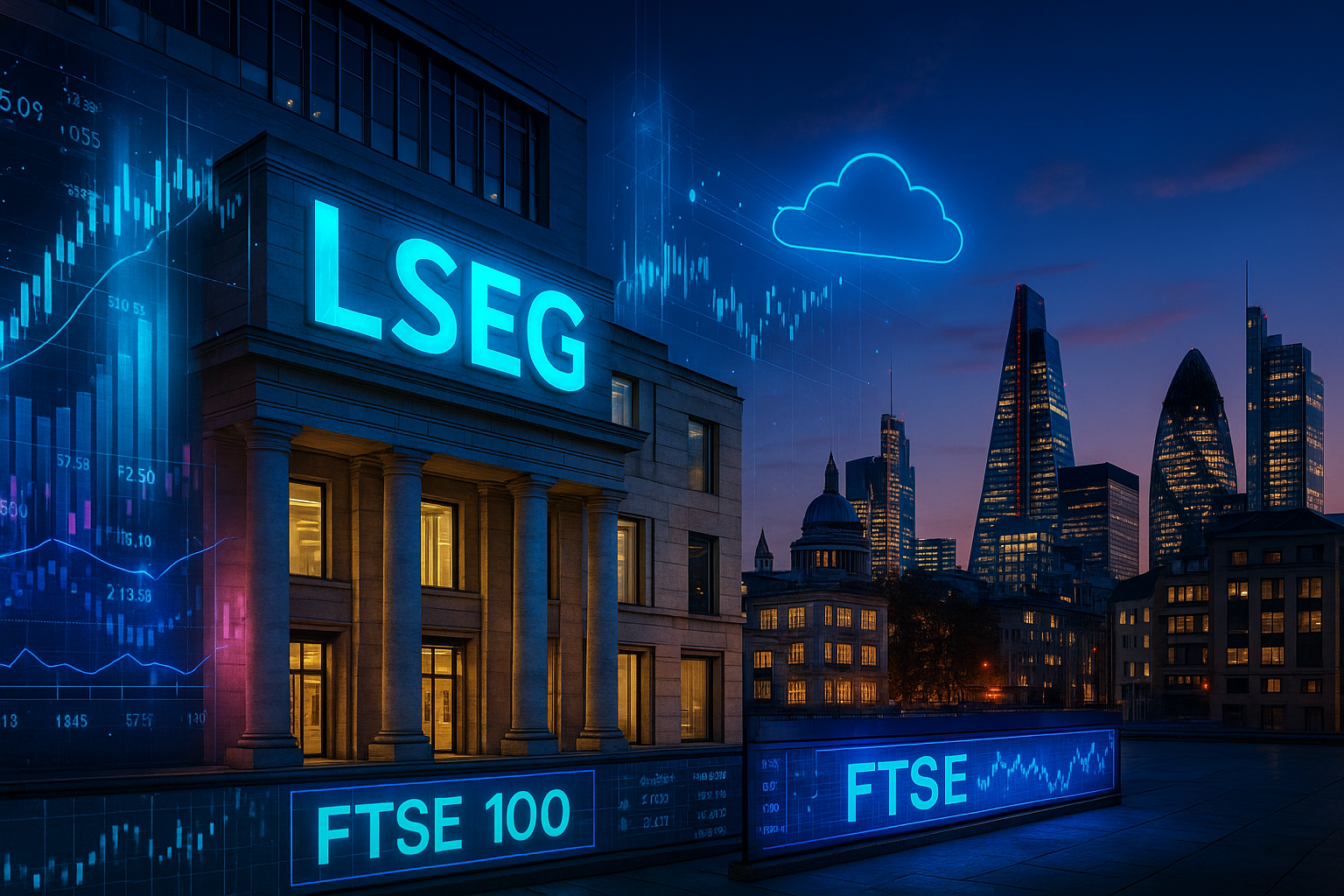$LSEG.L: Results, ASV, Microsoft partnership and tax advantage for dividends
London Stock Exchange Group ($LSEG.L) is today much more than a stock market: it is a global platform of data, indices, and analytics serving banks, asset managers, and issuers in over 170 countries. In 2025, the stock suffered from headlines about the slowdown in Annual Subscription Value (ASV), despite interim profit growth and a business that delivered positive revenues even in volatile environments. This mismatch between narrative and fundamentals opens an investment opportunity for long-term investors.
Why now?
- Advancing results (growing interim profit; positive revenues despite volatility), versus temporary ASV “noise”. The TRADE News (2025)
- Transition to workflows and usage (more value per client, less dependence on “seats”) confirmed by management. LSEG (2025a)
- Technological catalyst: 10-year partnership with Microsoft to co-develop data/analytics on Azure and enhance Workspace/M365. LSEG & Microsoft (2022)
- Sell-side support: RBC maintains Outperform and includes LSEG in its global list, calling the market’s reaction “excessive”. RBC (2025)
- Tax advantage for foreign investors: no withholding tax on dividends from UK companies, which improves net yield. Pinsent Masons (n.d.)
1) The opportunity: price punished by “noise”, not by structural weakness
After interim results, many headlines focused on ASV moderation, overshadowing profit growth. That media bias pressured the multiple even though the company showed it could generate revenues in a tough quarter. For fundamental investors, the set-up is clear: separate noise from signal and take advantage of the dislocation.
2) What is changing “under the hood”: from licenses to workflows
Management was explicit on the call: the focus is on embedded workflows, usage, and data/analytics packaging, rather than selling isolated “seats”. The migration from Eikon to Workspace and product integration expand client value and raise switching costs (stickiness). This matters: ASV may “soften” temporarily while the mix reconfigures toward higher-quality contracts. LSEG (2025a)
3) Catalysts for 6–18 months: technology, monetization and sentiment
- Partnership with Microsoft: co-developing solutions on Azure, integrating with Microsoft 365, and evolving Workspace. Expect more applied AI features for professionals (not generic AI), accelerating per-client monetization. LSEG & Microsoft (2022)
- Narrative normalization: as the market sees margins/profit advance and ASV fades from the spotlight, the multiple may re-rate.
- Price/mix levers in data, indices (FTSE Russell), risk, and feeds; pillars RBC highlights in maintaining its Outperform rating. RBC (2025)
4) Tax advantage adding “alpha” to dividends
For non-resident investors, the UK offers a little-discussed benefit: no withholding tax on dividends paid by British companies (except in specific cases). This boosts effective yield compared to markets where withholding can be 15–30%. For “growth + dividend” strategies, London is a silent ally. Pinsent Masons (n.d.)
5) Scale, mix, and competitive moat
LSEG serves ~44,000 clients with ~26,000 employees in 170+ countries, combining data + indices + execution/post-trade. That mix is hard to replicate for “data-only” players and strengthens its moat in margin resilience, recurrence, and expanding use-cases. LSEG (2025b)
6) Comparables and portfolio construction
In the data/indices/infrastructure layer, obvious comps are $SPGI, $MSCI, $ICE, and $NDAQ. LSEG relies on its integrated offering and index arm (FTSE Russell) to capture price/mix. For a “core + satellites” approach, LSEG can serve as the European core in data, complemented by those US peers.
7) Risks to watch
- Commercial metric (ASV): moderation phases may continue to weigh on the multiple in the short term, even if profit advances.
- Tech execution: capitalizing on the Microsoft partnership (Workspace, Azure, applied AI) is key to realizing “more value per client”. LSEG & Microsoft (2022)
- Competition: peers’ response and progress of generic AI; LSEG’s moat depends on proprietary data, low-latency feeds, and integrated workflows. LSEG (2025b)
Conclusion — Signal vs. noise
The 2025 picture shows a company with rising profit, resilient revenues, a clear shift to usage-based workflows, and a differentiating tech catalyst (Microsoft). The market punished the “ASV noise”, creating an entry point for long-term investors. Adding the dividend “alpha” from London’s net payouts, the thesis of multiple normalization gains traction over 6–18 months.
References
- The TRADE News. (2025). LSEG revenue posts positive results in face of market volatility. https://www.thetradenews.com/…
- LSEG. (2025a, July 31). H1 2025 Interim Results — Transcript. https://www.lseg.com/…/transcript-31july2025.pdf
- LSEG & Microsoft. (2022, Dec 12). LSEG and Microsoft launch strategic partnership. https://www.lseg.com/…/partnership-12dec2022.pdf
- LSEG. (2025b). Introduction to LSEG. https://www.lseg.com/…/introduction-to-lseg.pdf
- RBC Capital Markets. (2025, April). Top 30 Global Ideas for 2025 — Second Quarter Update. https://wiseequities.com/…/Top30-2025-Q2.pdf
- Pinsent Masons. (n.d.). Corporation tax in the UK (dividends section: no withholding for non-residents). https://www.pinsentmasons.com/…/corporation-tax-in-the-uk
Disclaimer: This content is informational and does not constitute financial advice. Consider your personal situation and conduct your own research before investing.





